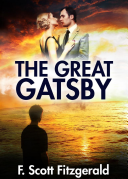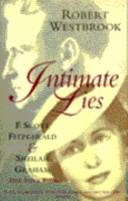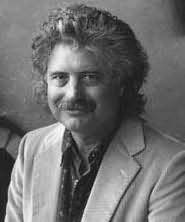Who Is Robert Westbrook?
Robert Westbrook,
Welcome to Book Chat, a column in which we’re going to discuss many things bookish: chat with authors, talk about publishing, romp back and forth through the centuries, and more often than not recommend a pick of the week. Fasten your seat belts because we’re going to go from history to histrionics, biography to biology, thrillers to classics to easy reads for that perfect day on the beach, and maybe even some philosophy for your serious side . . . fiction, non-fiction, old and new. This is a column for people who love all kinds of books.
But first you’re probably wondering, who is this guy Robert Westbrook? Let me introduce myself. I am a writer. It’s what I do for a living. I’ve published 11 books, both fiction and non-fiction, and I’m on the final draft of #12. I began writing professionally when I was 16 and my first book was published when I was 17, a youthful effort (clearly) which I’m happy to say is out of print. My mother was a writer before me. And today, besides writing my own books (I’m currently doing a mystery series that I’ll tell you about next week), I teach creative writing in New Mexico, where my wife Gail and I live.
Why do people write? For as many different reasons as there are writers, I suspect. In my case, I have often felt that I came to writing haunted, obliquely, by the ghost of F. Scott Fitzgerald, an author who has been for me both a guardian angel and a curse. The story is this:
 On December 21, 1940, the author of THE GREAT GATSBY
and TENDER IS THE NIGHT
stood up abruptly from a green armchair in the living room of a small and somewhat shabby Hollywood apartment, grabbed hold of the marble mantelpiece above the fireplace, and dropped dead of a massive heart attack. He was 44 years old. The living room in which Scott died belonged to my mother, a Hollywood gossip columnist who went by the name of
On December 21, 1940, the author of THE GREAT GATSBY
and TENDER IS THE NIGHT
stood up abruptly from a green armchair in the living room of a small and somewhat shabby Hollywood apartment, grabbed hold of the marble mantelpiece above the fireplace, and dropped dead of a massive heart attack. He was 44 years old. The living room in which Scott died belonged to my mother, a Hollywood gossip columnist who went by the name of Sheilah Graham. They had spent the previous three and a half years of their lives together. An odd relationship: a great author down on his luck and a pretty young woman with big ambitions and very little formal education. Scott had come to Hollywood in 1937, at a time when he was $40,000 in debt to his agent, dismissed by the critics, forgotten by the public, and struggling to stay sober. His life had crashed. His wife, Zelda, was in a mental institution back east and Scott had desperate hopes of making money as a screenwriter.
My mother, for her part, was a Cockney girl who had grown up in an orphanage in England and was trying to pass herself off as an English aristocrat – a kind of female Jay Gatsby, critics have sometimes remarked, whose past was the invention of her romantic imagination. Scott Fitzgerald saw through my mother rather easily and took it upon himself to become her teacher, setting up a program of learning which he liked to call “The F. Scott Fitzgerald College of One.” Scott and Sheilah’s love affair was rarely a smooth one. But it was passionate and, on my mother’s part, enduring. She never got over Scott’s death, literally at her feet. Five years later, when I was born, she decided that I would be a writer and carry on his tradition.
One of my earliest memories is sitting on my mother’s lap, opening the encyclopedia to Fitzgerald, F. Scott, and being told about this wonderful, talented man who died with $300 to his name, suffering from the neglect of his contemporaries and who had become such a legend after his death.
It wasn’t easy, I can attest, to try to live up to my mother’s expectations for me and walk in the shadow of F. Scott Fitzgerald. My mother was doing her best to turn me into a writer just like F. Scott Fitzgerald. Scott was an impossible act to follow, but I did my best. When I was a teenager, I often went with my mother when she interviewed movie stars – I remember meeting celebrities like John Wayne, Jack Lemon, Rosalind Russell, Jerry Lewis, and Peter Falk when he was an aspiring young actor trying to get a foothold in the business (even then he had his trademark gravelly voice and glass eye). My mother wrote seven columns a week and eventually she allowed me to do some of the actual writing.
Then, when I was a sophomore in high school, I went on a summer student exchange program to the Soviet Union. This was 1961, almost the height of the Cold War. We went to Moscow, Leningrad and Kiev, lived with Soviet students and spent three weeks working on a collective farm. When I returned home, my mother suggested I write five newspaper articles for NANA, the newspaper syndicate that circulated her own column. The articles were a success, published in major newspapers throughout the country, and eventually I was approached by an editor who asked if I would be interested in turning the five articles into a book.
JOURNEY BEHIND THE IRON CURTAIN was published in 1963.
(G.P. Putnam’s, 1963; Library of Congress Cat.# 63-9679 this was before ISBN numbers.)
I was a real, bonafide author at the tender age of 17.
After some magazine work in my late teens, I wrote a novel about my life in college,
THE MAGIC GARDEN OF STANLEY SWEETHEART , Crown 1969
(Library of Congress # 73-75088)
It was published by Crown, 1969 and immediately picked up as a movie by MGM. This was a heady time. MGM brought me to Hollywood to write the screenplay, and then promptly changed everything I wrote – the usual Hollywood experience, in fact, for any novelist. I hardly recognized my book when the movie finally came out in 1970, starring a 19-year old Don Johnson in his first role. (For some reason, he called himself Don Wayne Johnson in those days.) I was so discouraged that I took off for the hills, literally – building a small cabin in the redwoods of Northern California. It was 1970, remember, and the counterculture beckoned in a serious way.
 For the next fifteen years, I was determined to avoid the footsteps of Scott Fitzgerald and never to write another line. I worked in restaurants to support myself, learned to play jazz piano, and had a rather splendid time. But eventually my bookish background got the better of me. In 1985 I started to write again, mystery novels this time. I consider mysteries a serious genre: seriously funny, seriously entertaining, and a chance to create detective heroes who are to out discover what the world is really like.
For the next fifteen years, I was determined to avoid the footsteps of Scott Fitzgerald and never to write another line. I worked in restaurants to support myself, learned to play jazz piano, and had a rather splendid time. But eventually my bookish background got the better of me. In 1985 I started to write again, mystery novels this time. I consider mysteries a serious genre: seriously funny, seriously entertaining, and a chance to create detective heroes who are to out discover what the world is really like.
My first series was set in the Los Angeles of my childhood:
THE LEFT-HANDED POLICEMAN , Crown, ’86, ISBN 0-517-55953-6);
NOSTALGIA KILLS , Crown, ’88, ISBN 0-517-56763-6;
LADY LEFT , Crown, ’90, ISBN 0-517-57131-5.
Then came a novel full of black humor,
RICH KIDS , published by Birch Lane in 1992, ISBN 1-55972-106-5 ;
a non-fiction account of my mother’s life with Scott Fitzgerald,
INTIMATE LIES , Harper Collins, 1995, ISBN 0-06-018-343-8,
and finally my present mystery series, set in northern New Mexico, my new home:
GHOST DANCER , 1998; ISBN 0-451-19724-0
WARRIOR CIRCLE , 1999; ISBN 0-451-19817-4
RED MOON , 2000 ISBN 0-451-20035-7
ANCIENT ENEMY , 2001, ISBN 0-451-20481-6
TURQUOISE LADY , 2019
BLUE MOON , 2020
and
The Mexican , 2001
A long road. A lot of writing, endless work, and little glory.. I’m still not rich or famous, and the publishing business is more difficult than it has ever been, partly due to the fact that 90 percent of all American readers read only 10 authors.
But is it worth it? You bet!
I love books and wouldn’t consider any other life. So I hope you’ll join me and my wife, Gail (she will also review books she has particularly liked, so you don’t end up with just this white male’s point of view) as we indulge in one of our favorite pastimes: discussing what we’ve just read.
